Regarding the place name "Lò Gốm" (Pottery Kiln), Master's degree holder Nguyen Huu Loc (Ho Chi Minh City History Museum) stated: "In the Gia Dinh province map drawn by Tran Van Hoc in 1815, we see a place name written in two Nom characters to the west of Saigon (now the Cholon area): 炉[土感] "Lò Gốm". The presence of this place name indicates that a pottery-making village had formed in that area quite early."

Pottery Street in Ho Chi Minh City today
Photo: Truong Van Qui
Master Nguyen Huu Loc analyzed: "From the initial center of the pottery village, the pottery craft continuously developed and expanded northward to the Cay Mai hill area, and gradually spread southward to Phu Dinh and Hoa Luc villages. By the end of the 19th century, according to M. Derbes's statistics, there were 30 pottery kilns around Cho Lon, distributed in 3 main production areas: Hoa Luc – Phu Dinh, Cay Mai – Pottery Village, and Vin Hoi – Lieng Thanh (Can Hoi). This shows that the scale and concentration of pottery production facilities in this area were quite large, playing an important role in the socio -economic life of that time."
The place name "Pottery Kiln" in Saigon has been mentioned in historical records since the 18th century.
Dr. Phi Ngoc Tuyen - former Head of the Archaeology Department (University of Social Sciences and Humanities, Ho Chi Minh City) informed: "In those days, the Saigon - Gia Dinh area was a wild, mysterious, and dangerous place, a sacred forest with poisonous waters and few inhabitants. There were even oral traditions: 'Rowing a boat, fear crocodiles eating your feet / Going into the swamp, fear leeches; going into the forest, fear ghosts ,' or: 'The sacred forest, poisonous waters, wild animals / Mosquitoes buzzing like flutes, leeches swimming everywhere like noodles ...' Many Chinese people in the migration to Vietnam brought with them many trades, including the ancient pottery craft famous worldwide . It was these people who created the unique products of Saigon."
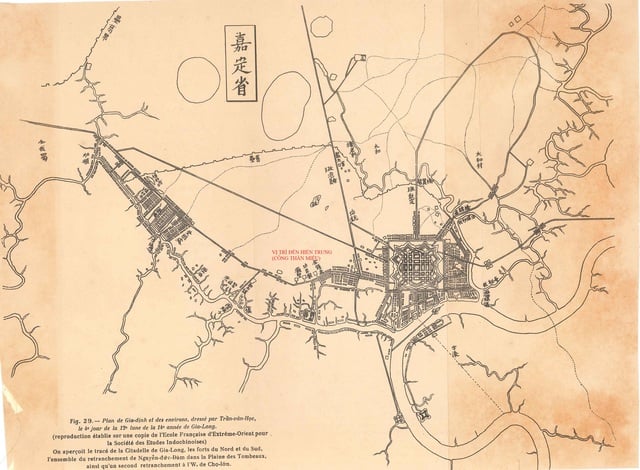
A drawing of Gia Dinh province in Tran Van Hoc's 1815 map.
Photo: LUONG CHANH TONG ARCHIVES
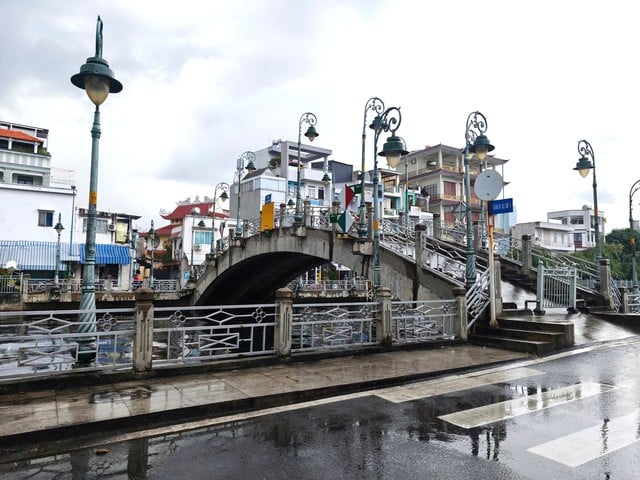
The old Saigon pottery-making area has now been urbanized.
Photo: Truong Van Qui
According to Dr. Phi Ngoc Tuyen: "The Pottery Village of Saigon is also recorded in the ancient poem 'Gia Dinh Bay Landscape' composed in the late 18th and early 19th centuries (recorded by Truong Vinh Ky, introduced by Nguyen Dinh Dau, 1997): '...the strange Pottery Village. The ancient pots build the sky...' Along with the ancient poem 'Gia Dinh Bay Landscape' composed around the beginning of the 19th century, the map of Gia Dinh Citadel drawn by Tran Van Hoc from the end of 1815 also recorded the place name Pottery Village, one of the famous craft villages of old Saigon, located around Phu Lam - Phu Dinh village."
Based on the recorded analysis of the famous Bửu Nguyên kiln from this period - "Southern Vietnam, Dike Bank, Pottery Kiln Street," Master Nguyễn Hữu Lộc argues: "In this cluster of place names, 'Pottery Kiln Street' means Pottery Kiln Street. Comparing it with a map of Chợ Lớn during the French colonial period, there was a street named Quai de Lo Gom located on the left bank of the Lò Gốm canal. After 1955, this street was called Bến Lò Gốm. In 1985, when the Lò Gốm canal section (from Minh Phụng Street to Phạm Đình Hổ Street) was filled in, this section was renamed Lê Quang Sung Street."
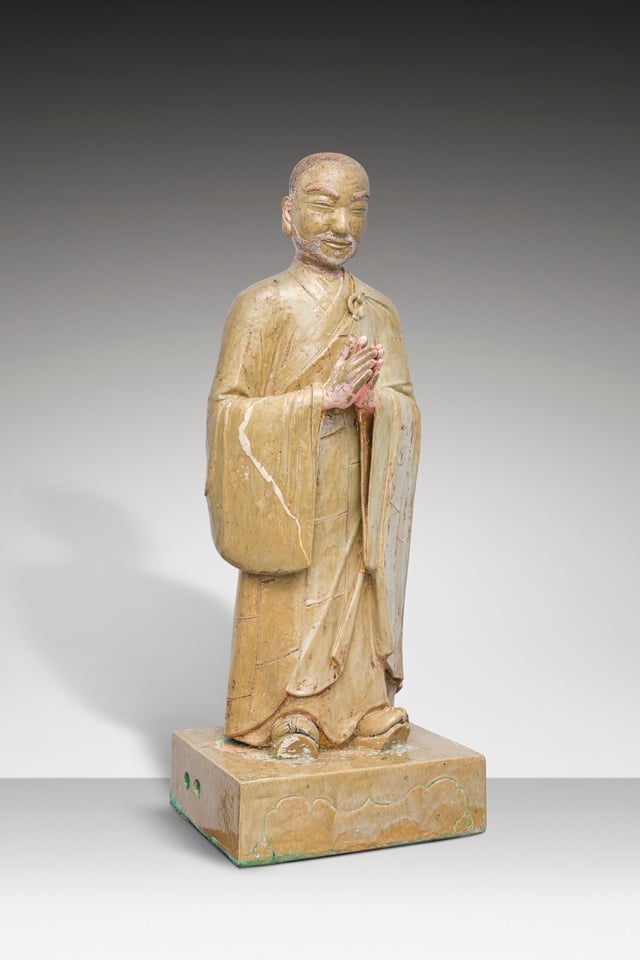
Statue of Kasyapa (Saigon glazed ceramic, early 20th century) by Buu Nguyen kiln
Photo: Collection of Le Thanh Nghia
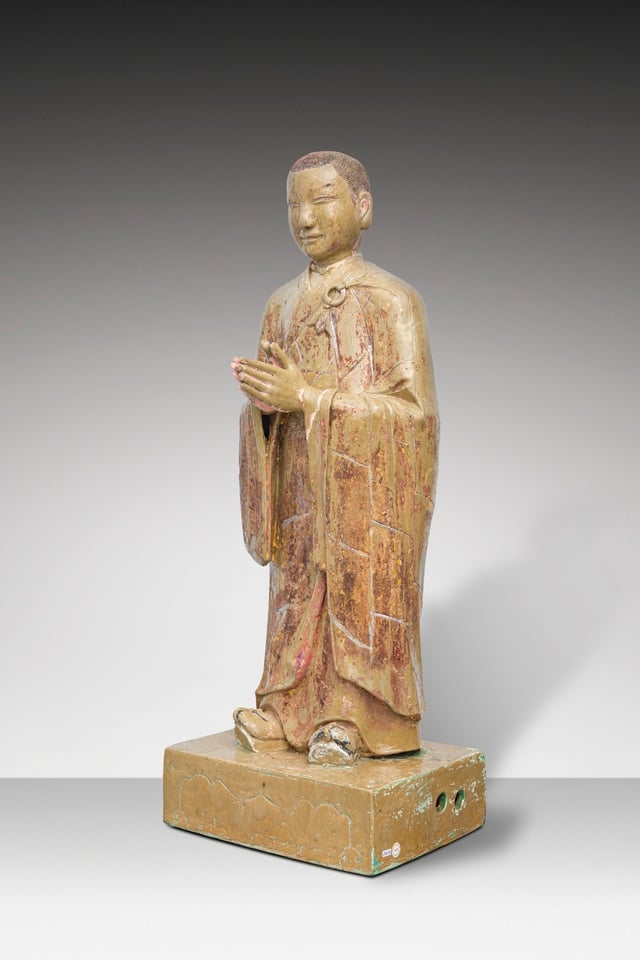
Ananda statue (Saigon glazed ceramic, early 20th century) from Buu Nguyen kiln.
Photo: Collection of Le Thanh Nghia
Dr. Phi Ngoc Tuyen further informed: "The Ruot Ngua canal facilitated boat travel between Saigon and the Mekong Delta. Therefore, this pottery kiln area was established before 1772. Saigon – Gia Dinh had many industries concentrated in specific areas, giving rise to place names such as: Mat Hamlet, Rice Cake Hamlet, Blacksmith Hamlet, Oil Hamlet, Thread Hamlet, Lime Hamlet, Flour Hamlet…. Regarding the "Pottery Kiln Hamlet," several place names remain, such as Pottery Kiln Road - Super Kiln Road - Land Hamlet Road - Pottery Kiln Wharf - Pottery Kiln Canal - Pottery Kiln Canal - Kiln Area… or ancient villages like Phu Giao – Cay Mai Hill, Phu Dinh – Phu Lam, Hoa Luc… belonging to the former districts of 6, 8, and 11."
"The place name 'Pottery Kiln' and 'Pottery Kiln Hamlet' in Saigon have been mentioned in historical records since the 18th century. Although the documents only record the name, these are the oldest and most important documents about the activities of the pottery-making hamlet, and are of significant value in confirming the presence of pottery making in old Saigon," Mr. Tuyen affirmed.
What traces of the past remain in the Pottery Village?
"The only remaining physical trace of the old pottery village is the Hung Loi pottery kiln site in Hoa Luc village (formerly Ward 16, District 8), located along the Ruot Ngua canal, opposite Phu Dinh village. The site is a large mound filled with pottery fragments of various types of jars, pots, basins, etc."
"Through two excavations in 1997-1998, the remains of three tubular kilns were found here. These three kilns produced pottery consecutively for a considerable period, but possibly not continuously, as the kilns of the later period were built on parts of the old kilns or the old kilns were repaired and reinforced," said Dr. Phi Ngoc Tuyen .
Source: https://thanhnien.vn/dia-danh-lo-gom-tu-dau-em-toi-dat-nay-185251022095606965.htm










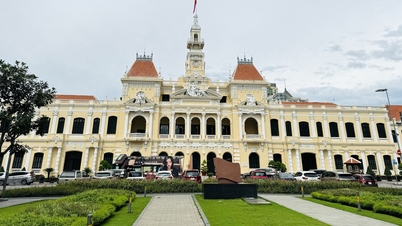

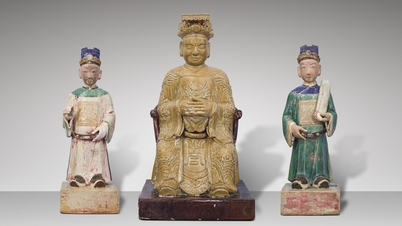
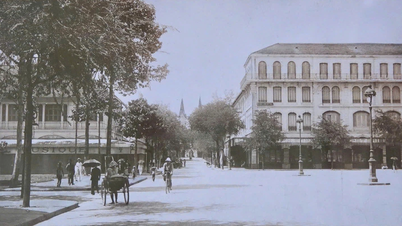
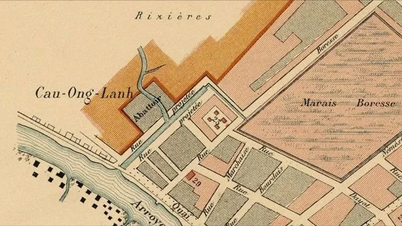




















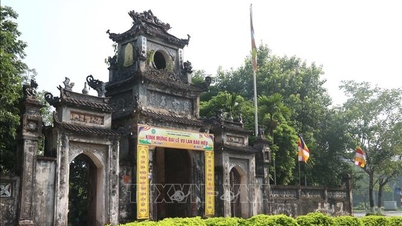



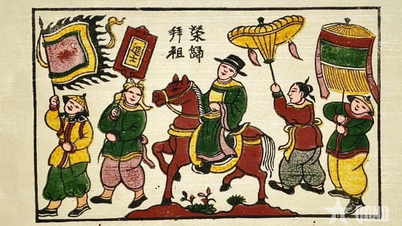

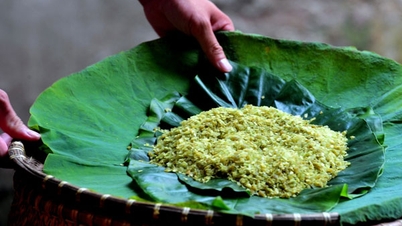
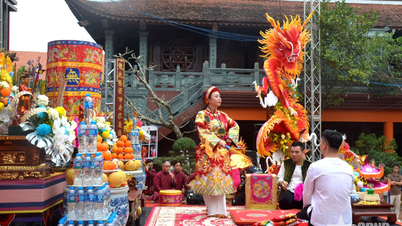

















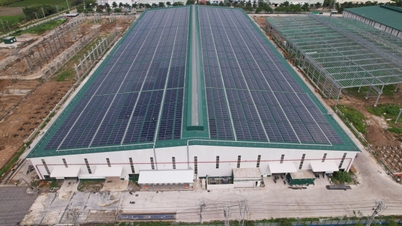















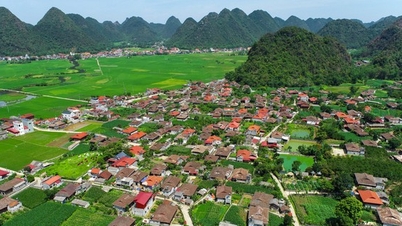










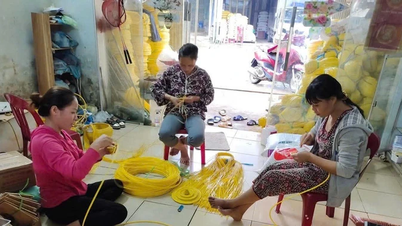

















Comment (0)